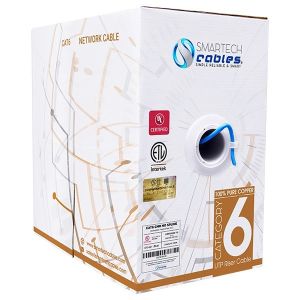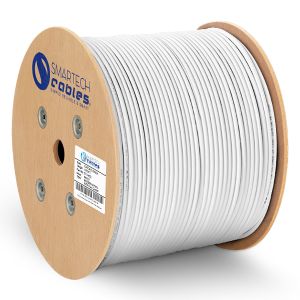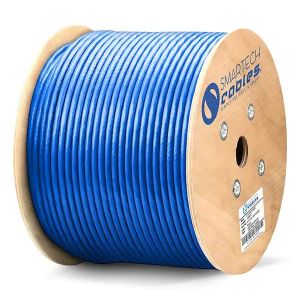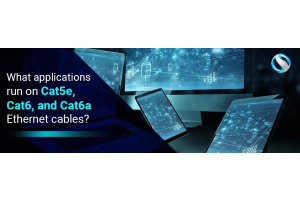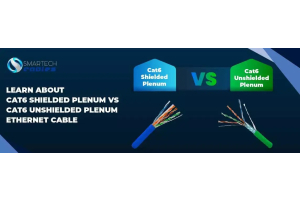Cat6a Cable: Guide to its Types and Specifications
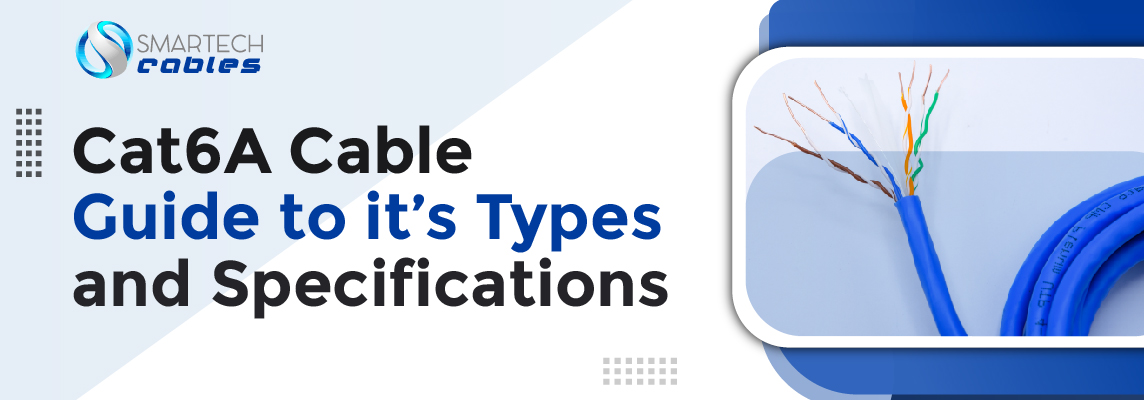
Planning to buy Cat6a Plenum Cable or Cat6a Riser Cable but don’t know the difference between the two? Well, you need not worry as our experts have got your back. In this article, you are going to learn all about the Cat6a cable including its types, specifications, jacket material, data transfer rates, bandwidth capacities, and certifications. All you need to do is to stay with us. So, without wasting another second, let’s get straight to the point.
Cat6a Cable
Cat6a is an augmented sixth-generation ethernet cable that offers super-fast data transfer speeds. The Cat in the Cat6a stands for the category, 6 stands for generation, and “a” stands for augmented.
Cat6a Cable Types
A Cat6a ethernet cable comes in 3 variants:
- Cat6a Plenum Cable
- Cat6a Riser Cable
- Cat6a PVC Cable
Guaranteed Best Price !
The Cat6a Plenum cable has a plenum-rated outer jacket. You can identity a plenum-rated jacket through CMP marking on the outer surface. CMP stands for Communications Multipurpose Plenum. A CMP rating or plenum rating is the highest rating for the jackets of the ethernet cables. A Cat6a Plenum Cable has fire retardant properties - it means that bulk Cat6a Plenum halts fire progression and emits no smoke or hazardous particles when it comes in contact with ablaze. Furthermore, you can use a Cat6a Plenum Cable in riser and outdoor spaces; however, it can’t be otherwise.
The Cat6a Riser Cable comes with a CMR-rated or riser-rated jacket. This jacket, just like a plenum jacket, also has fire retardant properties but it emits extremely low quality of smoke when it comes in contact with fire. The polyvinyl chloride used in the construction of this jacket is also of superior quality but it is not as supreme as that of plenum cables. You can use this cable in outdoor spaces, too. However, it can’t be otherwise.
The third and last variant is Cat6a PVC Cable. This variant of Cat6a ethernet cable comes with a PVC-rated jacket. This jacket is UV and sunlight resistant and also provides top-notch protection against hazardous oils. You will need a Cat6a PVC Cable for outdoor installations.
Cat6a Cable - Data Transfer Rates & Bandwidth Capacity
Whether it is Cat6a Plenum Cable or Cat6a Riser Cable, the data transfer rates and bandwidth capacities remain the same for all variants.
Being an augmented sixth-generation cable, Cat6a offers super-fast data transfer rates of 10 Gbps up to a length of 100 meters or 328 feet. With 750 MHz bandwidth capacity, the cable keeps the signal intact and you enjoy optimum connectivity. Remember, the industry standard for the bandwidth for Cat6a cable stands at 550 MHz. Being an industry leader, we manufacture Cat6a ethernet cables that offer 750 MHz bandwidth. So, when you buy Cat6a ethernet cables from us, you get the best value for your money.
Cat6a Cable - Pure Copper & CCA Conductors
Cat6 Plenum Cable and Cat6 Riser Cable come in both pure copper and CCA conductors. Cables with pure copper conductors are usually expensive but they offer top-notch performance in harsh conditions.
When it comes to ethernet cables, harsh conditions are those environments where electromagnetic interference and crosstalk are very high. A cable with pure copper conductors offers excellent protection against both as it bars EMI and crosstalk from messing up with your signals.
As far as copper-clad aluminum conductors are concerned, you will only use them in environments where EMI and crosstalk are almost non-existent.
Cat6a Cable - STP & UTP
Ethernet cables are classified as STP [shielded twisted pair] cables if they have an extra layer of protection. This extra protection can be in the form of a foil sheet wrapped around all four twisting pairs or each of them. You will run a Cat6a STP cable in a harsh environment.
Likewise, cables without an extra layer of protection are called UTP (unshielded twisted pair) cables. You will run a Cat6a UTP cable in an environment where crosstalk and EMI are of no concern, i-e non-existent. When it comes to pricing, STP cables are much more expensive than UTP cables.


